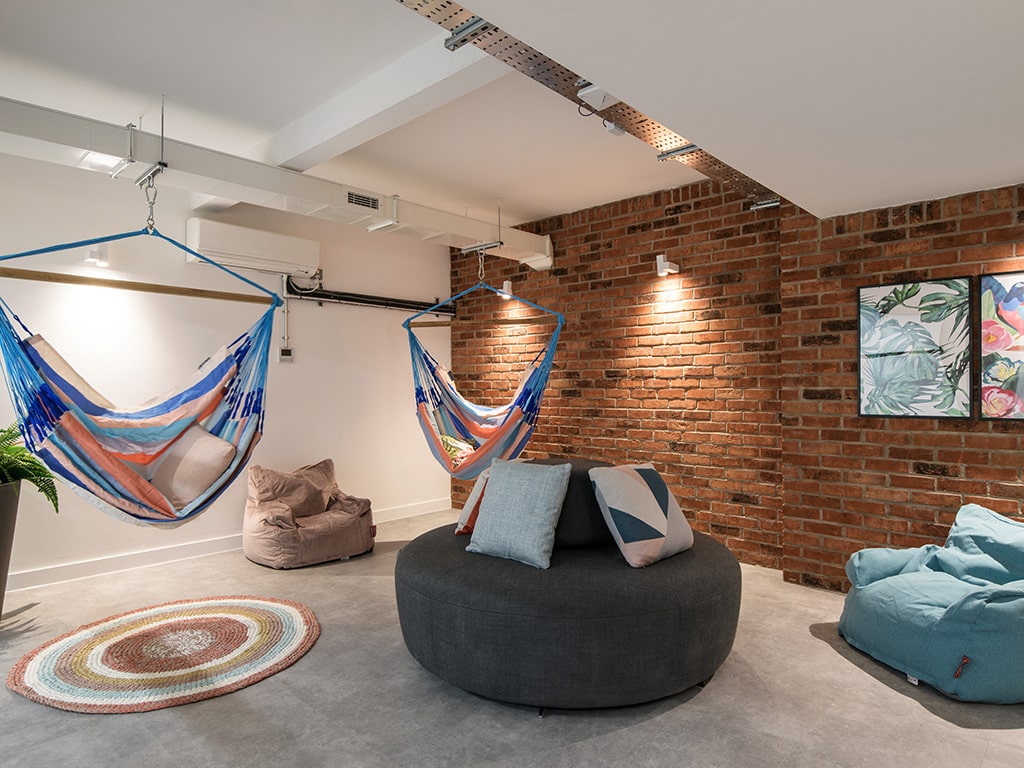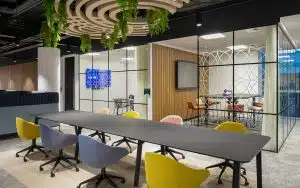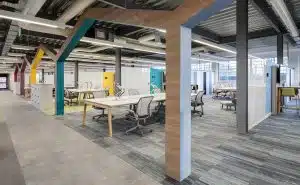With the battle to attract and retain talent tougher than ever, the market has firmly shifted in favour of employees when it comes to workplace demands. People now expect more than just a workplace, and organisations must react and raise the bar if they want their business to succeed.
We recently carried out market research among UK office-based workers, to gain real insights into what people really want from their workplaces.
The research revealed that the top three things that will make people most likely to work from the office, over and above free parking and free food and drinks, are:
• If the office was more comfortable (33%)
• If there was more choice of workplace settings (32.2%)
• If there was a positive company culture (29.2%)
In this, the first of our three-part blog series, we will explore the ‘The three C’s’ and how they impact the workplace, starting with our top tips for creating a comfortable office.
We spend so much time and effort ensuring our homes are comfortable, so why would we not do the same at work? Providing a comfortable workplace will not only help to improve the happiness and wellbeing of employees but also have a significant impact on the overall success of your business, through increased performance and productivity, and reduced absenteeism.
But where to start? What factors do business owners need to consider when it comes to creating a comfortable environment for their team?
1. Workplace settings
Providing employees with ergonomically designed furniture is key to ensuring comfort at work. Comfort of furniture can be measured in three ways: visual comfort, initial comfort and lasting comfort; it’s vital that these are all considered when creating a workspace which promotes comfort, safety and wellbeing, and prevents any potential health issues for employees.
Businesses should consider providing desks which can be modified to accommodate both sitting and standing positions, as well as adjustable computer monitors to allow people to alter their position throughout the day. An office chair featuring an adjustable seat, arm and back rests and a swivel is also key in reducing discomfort, improving posture and maximising efficiency.
2. Temperature
Thermal comfort is ranked as one of the highest contributing factors influencing overall satisfaction in buildings; it can have a major impact on productivity, comfort and levels of unplanned absences. Despite being tricky to navigate due to individual preference, by providing a workplace which offers flexibility and choice, and a zoned controllable heating and cooling system, you can allow your team to take control of their own comfort.
3. Lighting
Natural light has many positive effects on physical and mental health, with research proving that it balances circadian rhythm, which keeps moods and behaviours in check, as well as increasing satisfaction levels and reducing levels of anxiety and drowsiness. With this in mind, work stations where people will spend long periods of time should be located near to natural daylight. In addition, people require different levels of lighting depending on the task they are completing, so controllability and flexibility of any artificial lighting systems is also necessary to ensure employee comfort.
4. Acoustics
Noise levels are the main source of discomfort and distraction in modern office workspaces, so considering acoustics throughout your space is crucial. External factors can also have a noticeable impact on noise levels in a workplace, for example, if the building is located in high traffic areas or public works.
From having somewhere private to make calls or hold confidential meetings, to be able to work collaboratively as a team, or finding places to relax, designing an office which accounts for all of the team’s different needs is fundamental to not only mental health and wellbeing, but also productivity.
Acoustic panels, walls, ceilings and even furniture, can all help reduce sound movement around an office. Ultimately, by working with an expert to develop a holistic approach to creating optimum acoustical comfort for your team will help deliver long term business success.
5. Air quality
The quality of air in an office directly impacts health and wellbeing, so excellent ventilation needs to be priorisied when creating a healthy and comfortable workplace. In fact, studies show that good air quality in a workplace can result in better concentration and higher levels of productivity. Working with a technical services specialist will ensure you implement a ventilation design strategy tailored to your people’s needs.
6. Design
The colour palettes selected for an office environment can have a big impact on the overall mood, productivity, comfort and motivation of employees. A lot of businesses tend to use colours which align with their company branding, however, it’s also beneficial to consider the psychology of colour when designing an office. For example, green and blue tones promote a comfortable working environment, with both proving to aid stress management and encourage harmony.




